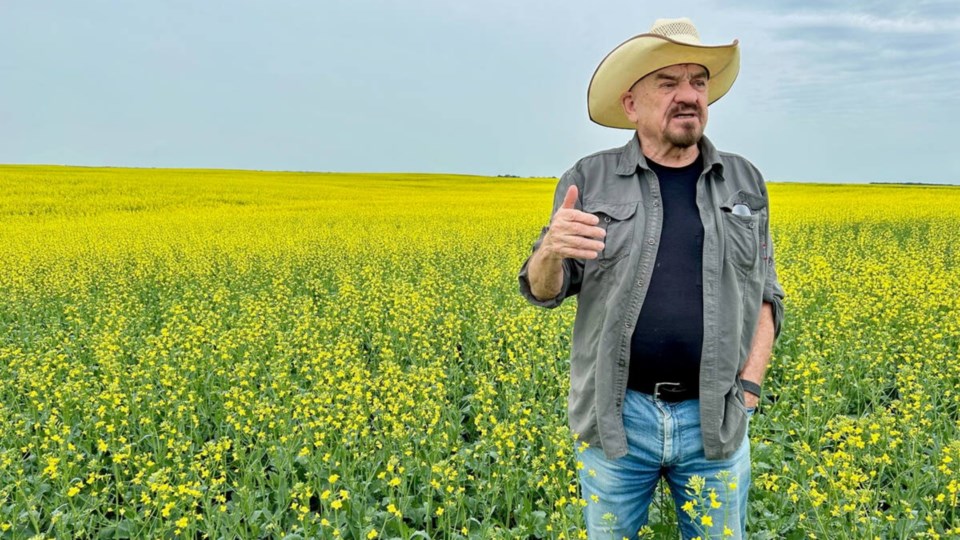The largest owner of cropland in Canada isn’t buying the idea that farmland values are overdue for a correction.
He says that’s because technical analysis — where market watchers use trends, patterns and mathematical models to predict future price movements — doesn’t apply to agricultural land.
“The Elliott Wave (analysis) was never meant for hard assets like gold or farmland,” said Robert Andjelic, who operates Andjelic Land, a Saskatchewan company that owns 248,000 acres of cropland in Western Canada and leases the land to farmers.
Andjelic made those comments while standing in a massive canola field south of Whitewood, Sask. The field, which he owns, doesn’t have mile roads or ditches. Yellow canola plants covered almost 16 sections of land, representing 10,000 acres of continuous canola.
Andjelic knows something about farmland values because he’s the second largest owner in cropland in North America, after Bill Gates. He was responding to analysis done by Trent Klarenbach, a grain marketing analyst in Saskatoon who runs Klarenbach Research.
In June, Klarenbach published a report on Saskatchewan farmland values.
Price charts and his analysis suggests that the farmland market has become risky. Producers should be cautious about expansion because land prices could drop.
“You really want to be careful of buying at these (price) levels because they are quite extended and this could be an area of resistance,” he said.
Kristjan Hebert, who operates Hebert Grain Ventures, a grain farm and other businesses in Fairlight, Sask., said he’s not an expert in technical analysis, but in his experience, what drives land values in Saskatchewan is local farmers competing for available land.
Saskatchewan farmland is a protected market, he added.
Provincial rules prohibit out-of-country investors from acquiring land. Canadian investors, such as Andjelic, do own farmland, but they control less than three per cent of the province’s land.
“In Saskatchewan, we’re definitely under-valued to the world because we have one of the most protected land assets,” Hebert said.
“I’m only an hour from North Dakota. If I (moved) over the border, my farm (would increase by) $2,000 an acre.”
Farm Credit Canada publishes an annual report on farmland values across the country. The FCC historical data does show that land prices have boomed over the last 20 years. In northeastern Saskatchewan, for instance, the average price of cropland in 2005 was $478 per acre. In 2023, it was $3,600 per acre.
Some analysts may like charts, but FCC focuses on the supply/demand fundamentals – how much land is available and are there buyers for that land, said Justin Shepherd, senior economist with FCC.
The number of interested buyers depends mostly on farm profitability.
“Which is driven by farm cash receipts,” Shepherd said.
“In recent years, we’ve still seen strong growth in farm cash receipts.”
Moving forward, it’s possible that land values in certain regions of Canada will climb and other areas could flatten or decline, Shepherd said.
“Farmland is still very much a regional market,” he said.
“Even within regions, there are different land dynamics…. There could be areas that see (more) farmland value growth …but there could be other areas where there is (less) competition for that farmland, where you could see things slow down.”
Klarenbach, who wrote the technical analysis study on farmland values, has heard from many people who are skeptical about his report.
He has accepted the criticism with good humour.
“Well, they could be right,” he said at the recent Ag in Motion farm show near Langham, Sask.
However, he’s a firm believer in technical analysis and is convinced that it does apply to farmland.
That’s because human behaviour and psychology matters in markets, regardless if the asset is a stock in a company, Bitcoin, gold or land.
“I believe, over time, we will see Saskatchewan farmland values behave in the same manner as every other asset class.”



